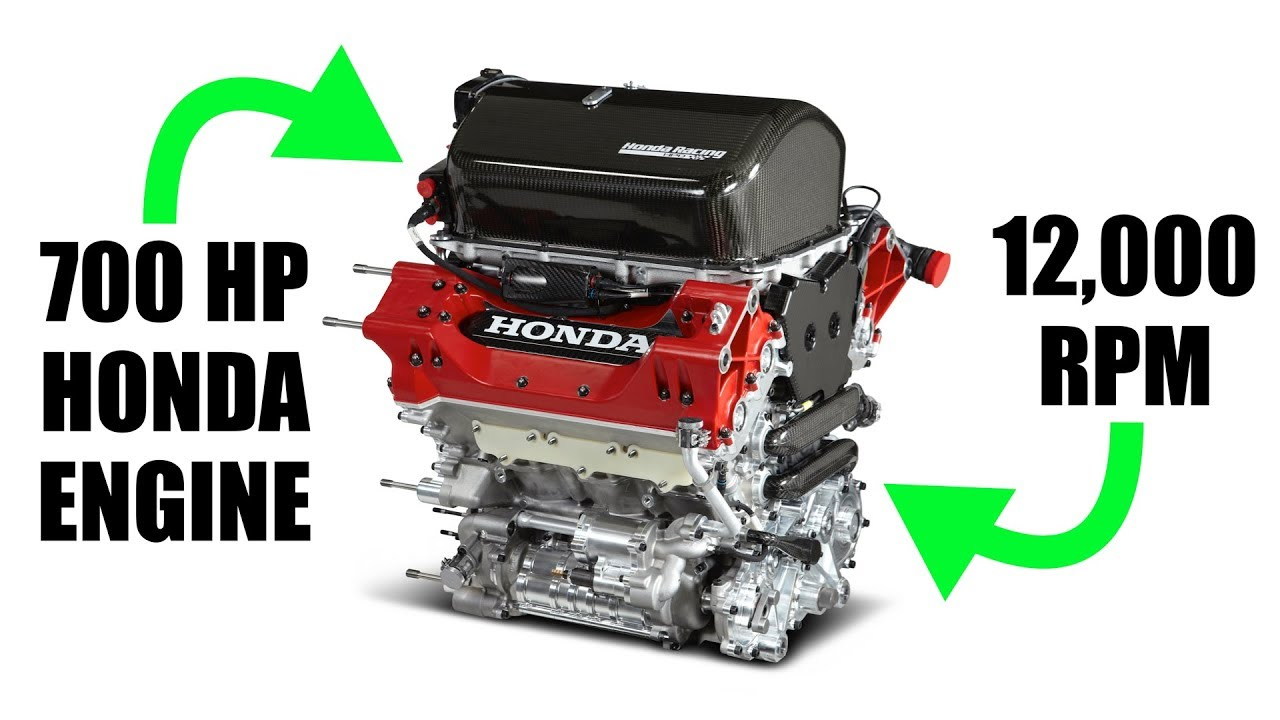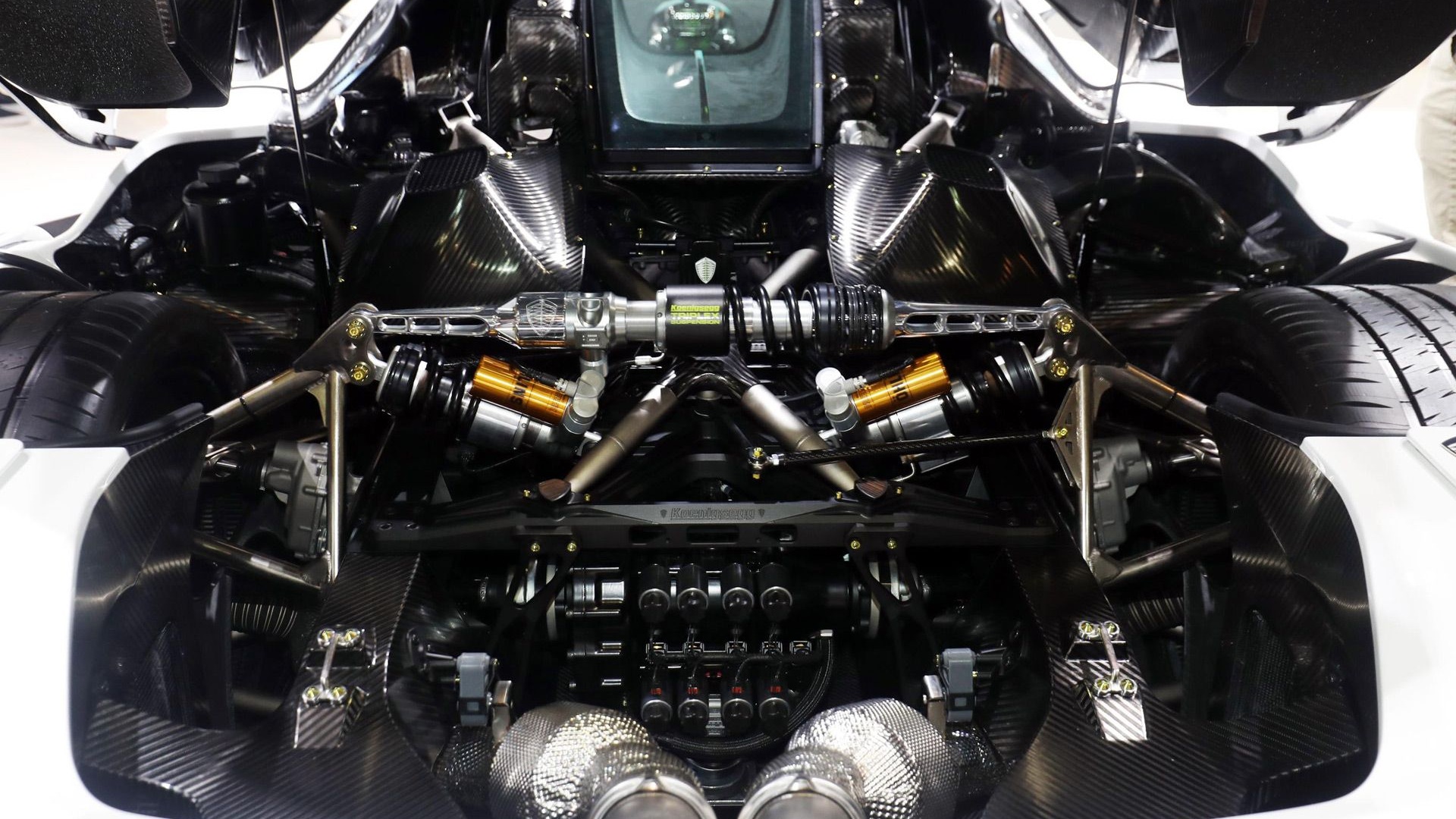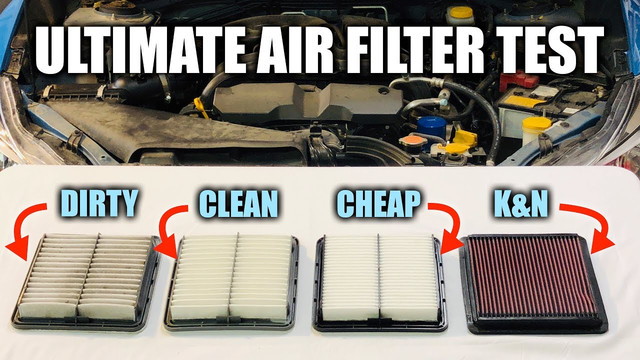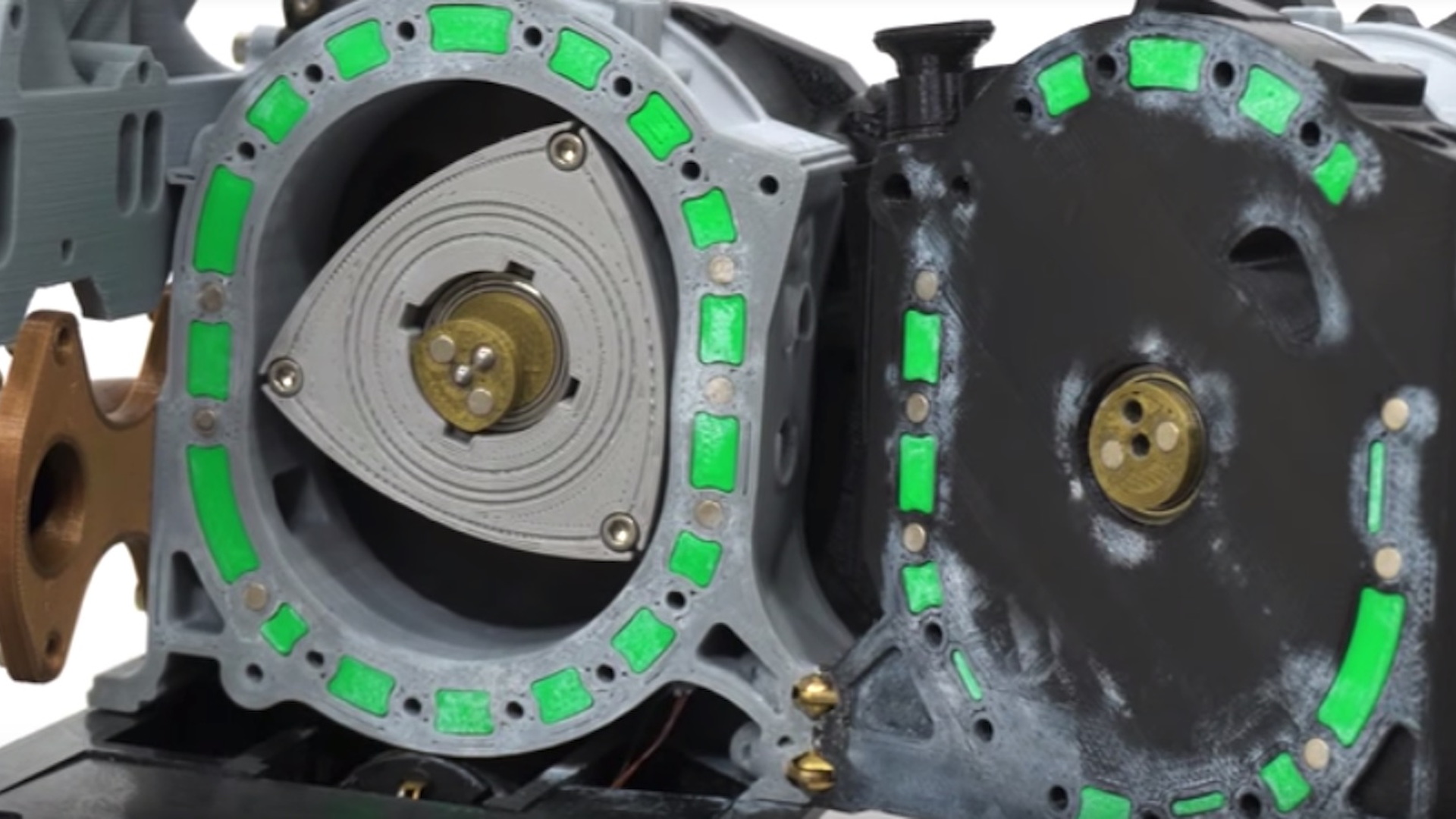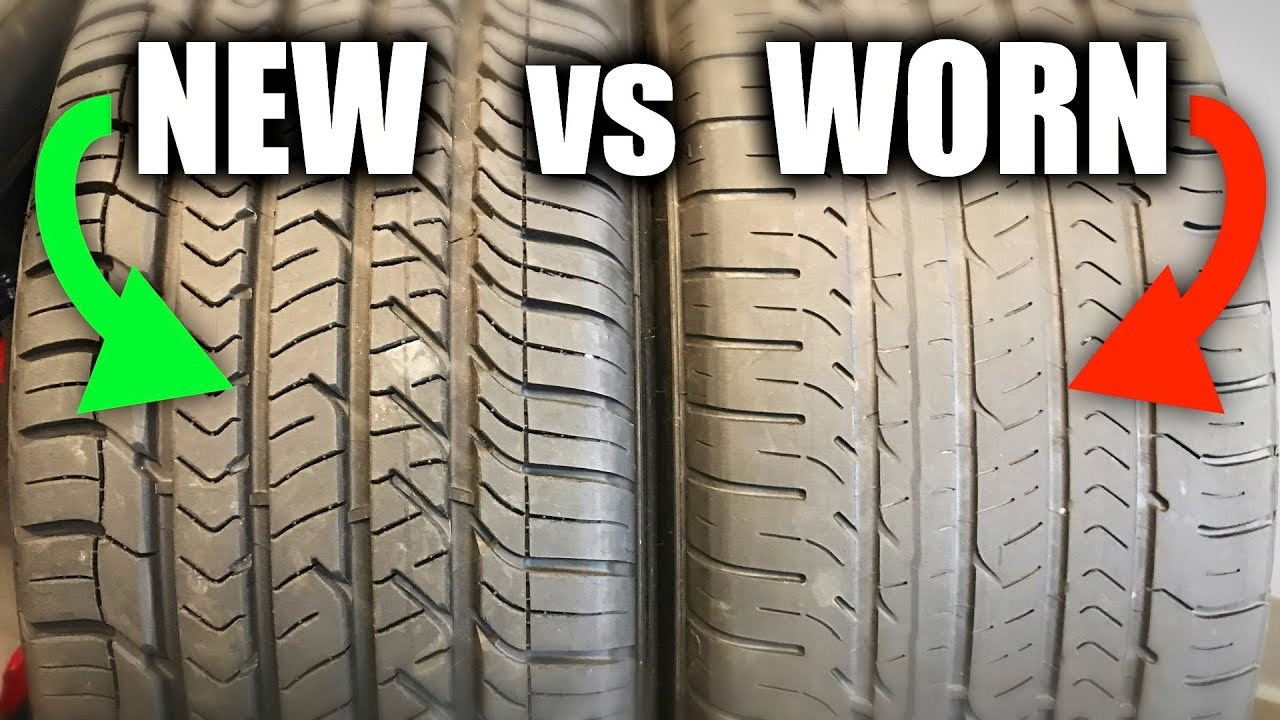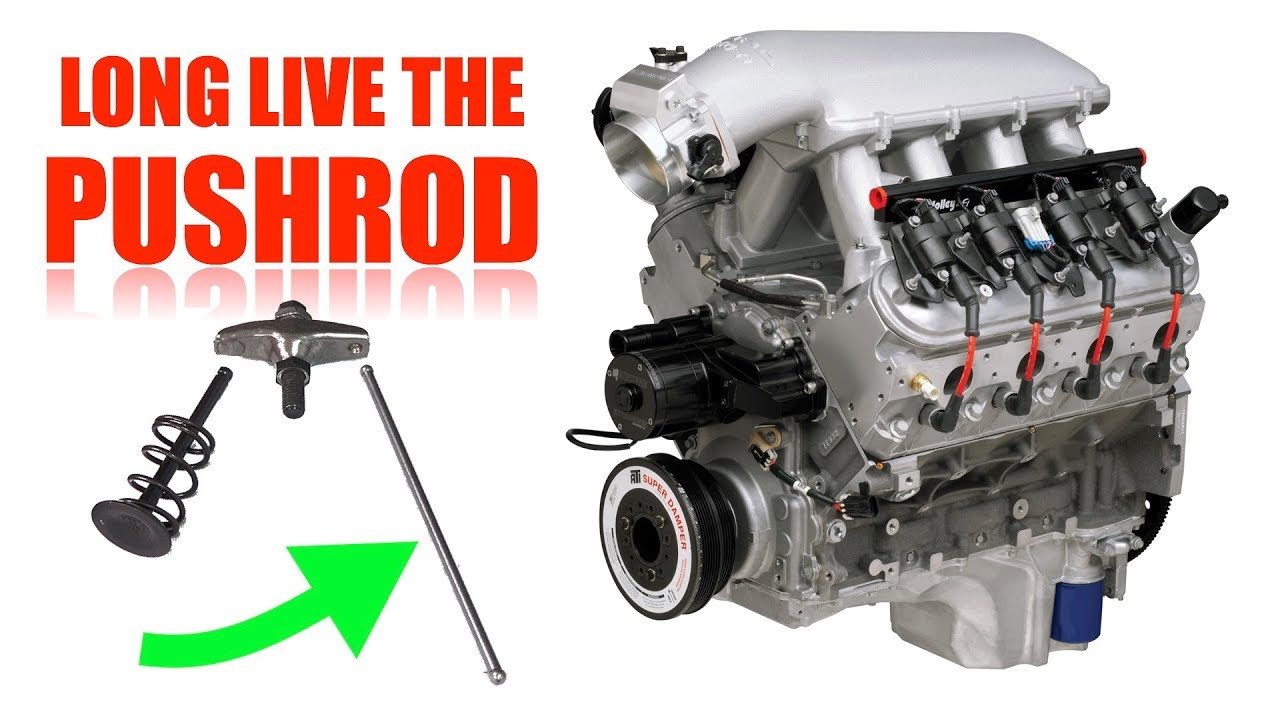Engineering Explained
-
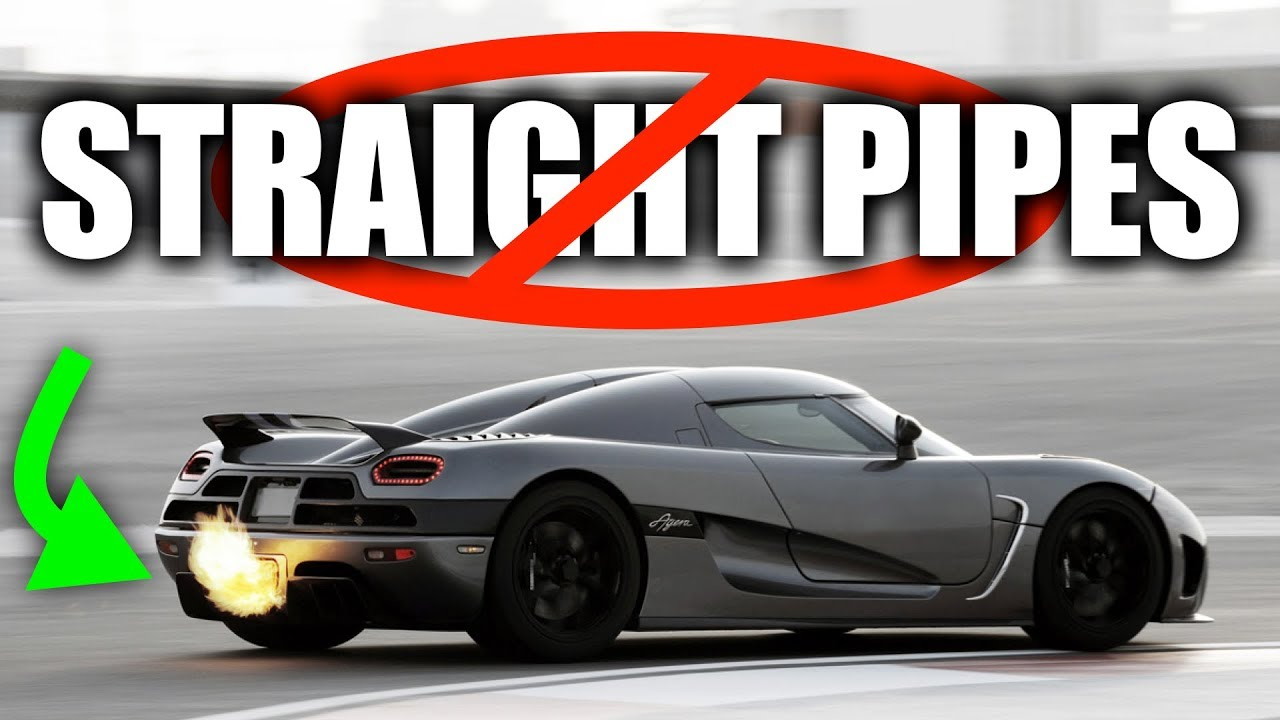
Jason Fenske of Engineering Explained shows how Koenigsegg's engineers bypass straight pipes and emissions delays to optimize power
-
 Why hydrogen-powered combustion engines aren't a good idea
Why hydrogen-powered combustion engines aren't a good ideaIs hydrogen the future fuel source for the combustion engine?
Sean Szymkowski -
 Can a Mercedes G-Wagen actually climb a 100 percent grade?
Can a Mercedes G-Wagen actually climb a 100 percent grade?Engineering Explained attempted to test Mercedes' claim for the hardcore off-roader.
Drew Johnson -
 How Honda gets over 700 horsepower from a 2.2-liter V-6
How Honda gets over 700 horsepower from a 2.2-liter V-6Honda's engine it currently runs in the IndyCar series is a 700-horsepower 2.2-liter turbocharged V-6. Keep an eye on the displacement figure. Now, realize the Honda Civic Type R features a 2.0-liter turbo-4 engine with 306 hp. Where in the world is Honda getting nearly 400 more hp from the IndyCar...
Sean Szymkowski -
 How the 2020 Chevrolet Corvette Stingray achieves a sub-3-second 0-60 mph time
How the 2020 Chevrolet Corvette Stingray achieves a sub-3-second 0-60 mph timeEngineering Explained does the math to tell us why the 2020 Corvette C8 can reach 60 mph in less than 3.0 seconds.
Sean Szymkowski -
 Why no-lift shifting is a really bad idea
Why no-lift shifting is a really bad ideaYou may have heard the term before: "no-lift shifting." It's the process of foregoing the clutch altogether and simply popping the car into the next gear. Long story short, it's a really bad idea. Jason Fenske of Engineering Explained tells us all about the issues the process causes in a new...
Sean Szymkowski -

Koenigsegg uses a remarkable system to shuttle between gears nearly instantly
-
 What do the numbers on a tire mean?
What do the numbers on a tire mean?From size to speed and load ratings to specific automaker stampings to batch numbers, Engineering Explained describes what all those tire markings mean.
Sean Szymkowski -
 Koenigsegg Jesko engine deep dive: The world's most-powerful production engine
Koenigsegg Jesko engine deep dive: The world's most-powerful production engineEngineering Explained examines the special tweaks made to the Koenigsegg Jesko 5.0-liter twin-turboV-8 to increase output to 1,600 horsepower.
Sean Szymkowski -
 Why the inline-6 is making a comeback
Why the inline-6 is making a comebackEngineering Explained examines the comeback of the inline-6, from the manufacturing synergies to the smoothness to the reduced parts cost.
Sean Szymkowski -
 Everything you need to know about ceramic coatings
Everything you need to know about ceramic coatingsCeramic coatings can work with paint films to protect your car's paint and repel water.
Sean Szymkowski -
 Take a closer look at the McLaren 720S supercar's complex suspension
Take a closer look at the McLaren 720S supercar's complex suspensionNumerous systems go into making a high-performance car, and while a powerful engine is almost always one of them, engineers never forget about the suspension. What's a lot of power good for if it handles like a sloppy mess? The McLaren 720S uses a very neat system, although it's mighty complex...
Sean Szymkowski -

Water injection systems aren't new to the automotive world, but the idea of using water recovered from an exhaust system is. Jason Fenske of Engineering Explained dedicated an entire episode to describing how such a system could help create more horsepower and remove water storage tanks from cars that use water injection. Before we get into that, it helps to understand what water injection systems do. Jason did an entire video on how water injection works in the past, but we'll quickly recap how it works now. The system sprays water into the intake manifold to create cooler air. The water...
-
 Learn why McLaren uses a top-mount exhaust for the 600LT
Learn why McLaren uses a top-mount exhaust for the 600LTMcLaren's top-mount exhaust pipes on the 600LT certainly look cool, but there are actually multiple reasons why the British marque opted for the design. Jason Fenske of Engineering Explained had the opportunity to speak with the 600LT's chief engineer, and he answered numerous questions about the...
Sean Szymkowski -
 Learn how BMW used water to make more horsepower in the M4 GTS
Learn how BMW used water to make more horsepower in the M4 GTSThe BMW M4 GTS is one of few production cars to use a water injection system. The M4 GTS sprays water into the intake manifold to cool down air for its engine. How in the world does water help make more horsepower? That's the question Jason Fenske of Engineering Explained answers in this episode...
Sean Szymkowski -
 Do performance air filters actually work?
Do performance air filters actually work?Air filters are one of the easiest and quickest components to swap out for an aftermarket part, and plenty of companies claim their design will increase horsepower, torque, and improve acceleration. Do they? Jason Fenske of Engineering Explained is here to answer that question. For the test, he...
Sean Szymkowski -
 2020 Toyota Supra engine deep dive: This isn't a 2JZ
2020 Toyota Supra engine deep dive: This isn't a 2JZAs we're all well aware of by now, the 2020 Toyota Supra uses a lot of BMW engineering and components. One of the main elements borrowed from BMW is the 3.0-liter turbocharged inline-6 engine. Engineering guru and explainer extraordinaire Jason Fenske of Engineering Explained dedicated an entire...
Sean Szymkowski -
 Here's how Subaru made its most powerful engine ever
Here's how Subaru made its most powerful engine everAfter years of Subaru treating the world to special, more-powerful WRX STI models, the Japanese automaker finally delivered one to the U.S. The Subaru WRX STI S209 debuted in January at the 2019 North American International Auto Show in Detroit with the company's most potent production engine so...
Sean Szymkowski -

If you've ever wondered what makes up the famed rotary engine from Mazda, now is the chance to dive in. Engineering Explained showed off an incredible 3D-printed rotary engine scale model, and host Jason Fenske walks us through what makes the peculiar powertrain tick. Specifically, this is a 1.3-liter 13B rotary engine from a Mazda RX-7, at about the third of the size of the real thing. The Japanese automaker manufactured the engine from 1992 until 2002. It features twin turbochargers and it's seriously tiny. While the model is at one-third scale, the real-life engine only measures one cubic...
-
 What is VTEC and how does it work?
What is VTEC and how does it work?Valve Timing Electronic Control, better known to enthusiasts as VTEC. We hear a lot about the system, but what is it exactly and how does it work? Jason Fenske, engineering mastermind behind YouTube's Engineering Explained, has tackled the system in one of his latest episodes. As usual, he breaks...
Sean Szymkowski -
 Are expensive tires worth the price?
Are expensive tires worth the price?Everyone likes to find ways to save money. With respect to your car, there are times when you can opt for lower octane fuel, more affordable oil, and non-OEM parts. But should you skimp when it comes to buying tires? Recently, Engineering Explained looked at the performance variation as your tires...
Jeff Glucker -
 What's the performance difference between new and used tires?
What's the performance difference between new and used tires?Jason Fenske from Engineering Explained is here to tell you all about what happens as your tires wear down. While you think it's a simple reduction in grip, there's a whole lot more to process. In fact, certain tires can see an increase in grip as the tire wears down. Confused? You won't be for...
Jeff Glucker -
 How does a V-8 engine work?
How does a V-8 engine work?V-8 engines are one of the most common styles of engine across the entire automotive industry, especially when the goal is to produce a lot of power with a smooth delivery. So, how does such an engine work? Jason Fenske of Engineering Explained is here to shed light on how a V-8 engine operates...
Sean Szymkowski -
 5 reasons why pushrod engines still exist
5 reasons why pushrod engines still existThe pushrod engine is a rather archaic piece of engineering, but automakers have stuck by it to this day. Notably, Fiat-Chrysler Automobiles and General Motors still shove pushrod V-8 engines under the hoods of hundreds of thousands of vehicles. Why has the pushrod engine failed to die, especially...
Sean Szymkowski



